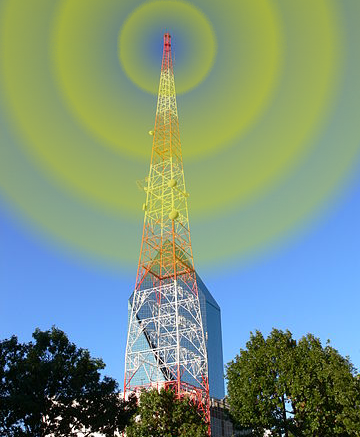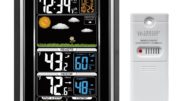I see a lot of wires around me in my office. The neat freak in me wants them all gone. Why can’t I just get power wirelessly from the outlet? is that so hard?
In other words, why can’t you transmit electricity wirelessly?
Here’s the thing… you can and you do, all the time. Radio waves are electricity, and whenever you use wi-fi, or a remote control, or a cell phone, you’re transmitting wireless electricity. When you listen to the radio, watch TV — even satellite TV — or use your bluetooth headset, you’re receiving wireless electricity. Wireless electricity is everywhere.
Wireless electricity in the last 150 years
If you’ve seen a bolt of lightning, you know that electricity can travel through open air. Even before anyone really understood what electricity was, this was known. However, starting around 1890, scientists discovered a very interesting fact about electricity. If you make electricity jump from one place to another, it keeps the same “form.” in other words, you can make the electricity travel in very tight waves, and when you jump it from place to place it still stays in very tight waves.
That little discovery makes every wireless thing you’ve ever seen work. Every time you broadcast something, it stays in the same form when it’s received. So if you broadcast the “Play” command from your remote, it still looks like the “Play” command when it gets to your DVR. If you record sound by talking into a cell phone, the electronic form of that sound is still the same when it gets to the other guy’s cell phone. Seriously, very cool.
It took about 30 years for anyone to create a transmitter that could even duplicate the human voice, and even longer for video, and even longer than that for computer data. The science is simple, but making it work is hard.
But, back to wireless power. If I’m broadcasting all the time, and it’s all electricity… why can’t I charge my laptop without plugging it in?
Blame Nicola Tesla
Well, that’s not really fair. Don’t blame him just because he couldn’t make it work. At least he tried. Dr. Tesla invented or patented a lot of what makes life work today. He did some of the most important work on radio, and when he wasn’t doing work on electricity, he invented things in his spare time, like the electric motor, the speedometer, all sorts of things. But what he really wanted to do was invent wireless electricity.
Oh, he tried. He tried as hard as anyone ever tried. But he was stumped by a basic fact of wireless electricity: signal loss. If you’ve read our series on cables, you know that as electricity travels, it loses a little of its strength. It turns out that when electricity travels wirelessly it loses A LOT of strength. A radio station may beam a signal 500,000 watts strong into the air but by the time it gets to your radio it’s a few watts or less.
Tesla figured out that in order to power a lightbulb from a mile away, you needed enough power that you would electrocute anyone who came even close to the transmitter. That’s one lightbulb. In order to generate enough juice to wirelessly power everything in your home would probably take a nuclear reactor. A whole reactor, for every house. It just doesn’t make sense.
This wasn’t just a lab experiment, Tesla set up gigantic transmission towers to prove his point. He also electrocuted a lot of of woodland creatures. He was… a little nuts.
So, the bottom line is: why can’t you transmit electricity wirelessly? You can, but not enough to make anything actually turn on. Kind of a bummer. I’m sure the woodland creatures thought so too.
Other, saner people
The good thing is that Tesla wasn’t the only person working on wireless electricity. The late 19th century and early 20th century was a feverish time in the history of the world, because for the first time people from all over the world could share information fairly quickly. The telegraph opened up doors to anyone who wanted to talk to someone anywhere in the world, and reliable mail service, something we take for granted today, made it possible for people to send long messages to each other almost anywhere in the civilized world.
That’s how people like Heinrich Hertz, Lee de Forest, Guglielmo Marconi and others were able to build on each other’s work so effectively. Hertz (a German) established that electricity could be modulated, de Forest (an American) discovered that you could amplify a signal without destroying it, and Marconi (an Italian) applied the basic principle of the telegraph to radio waves. The three men never collaborated directly but were able to see each other’s work, leading to very rapid inventions.
And all of it started because someone wanted to transmit electricity wirelessly.





